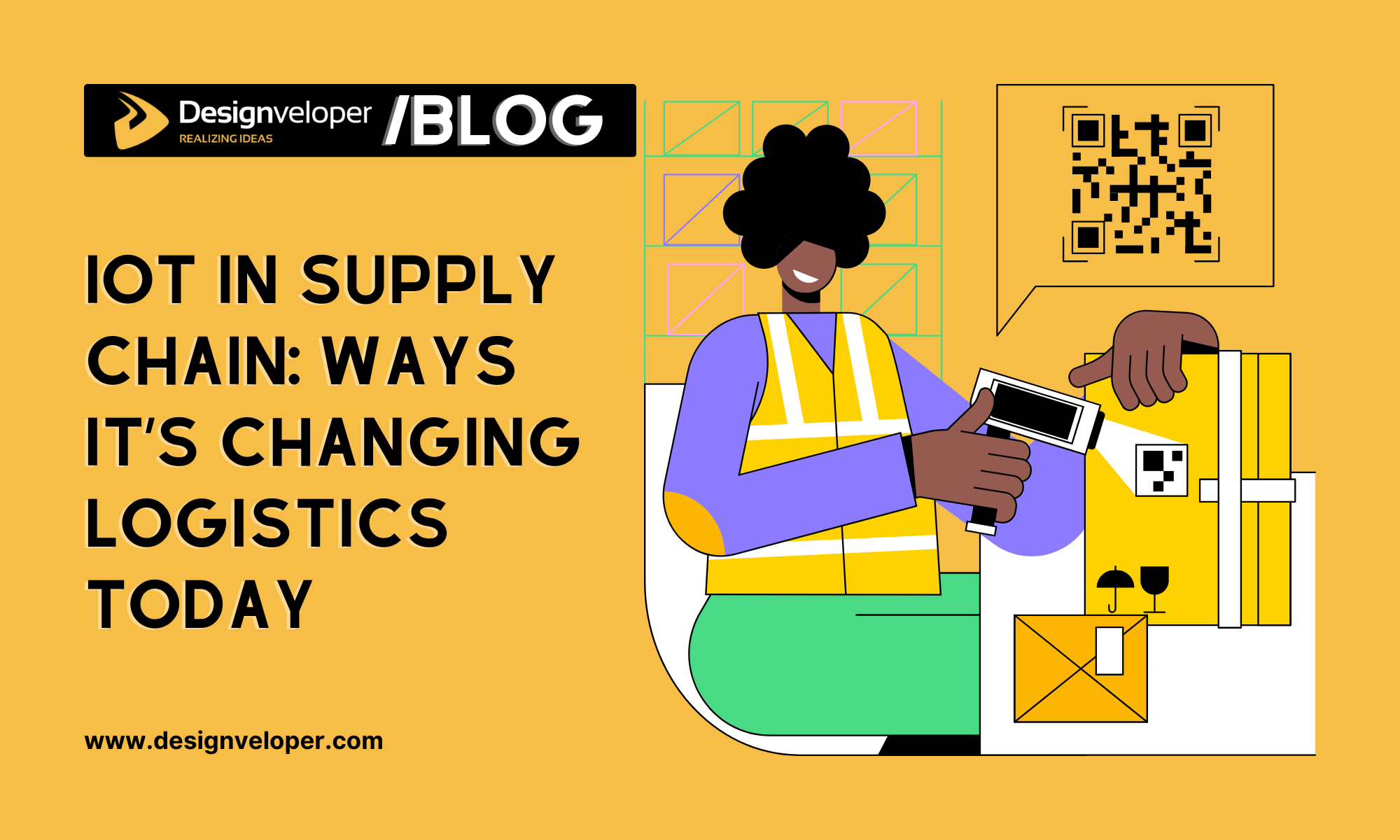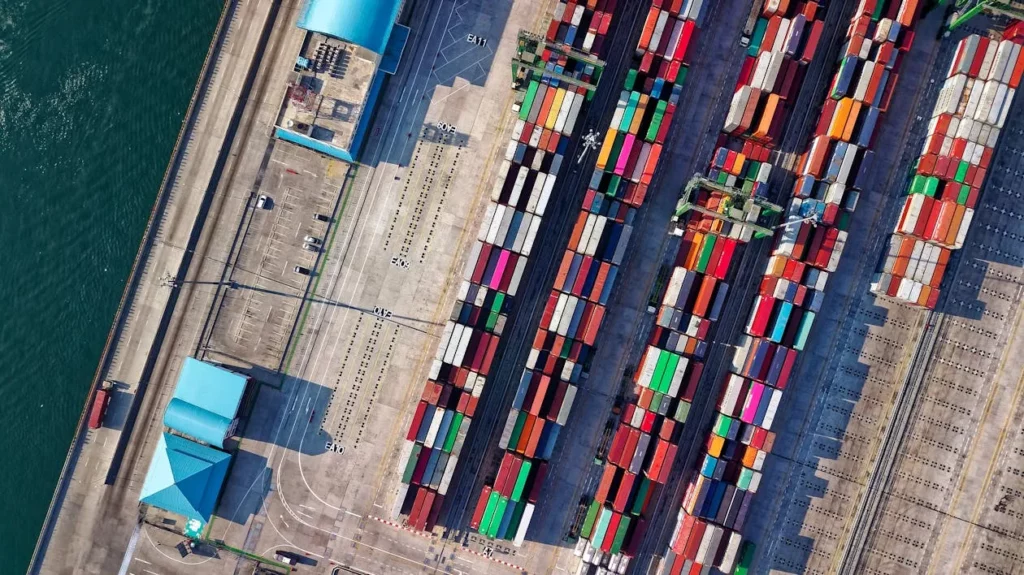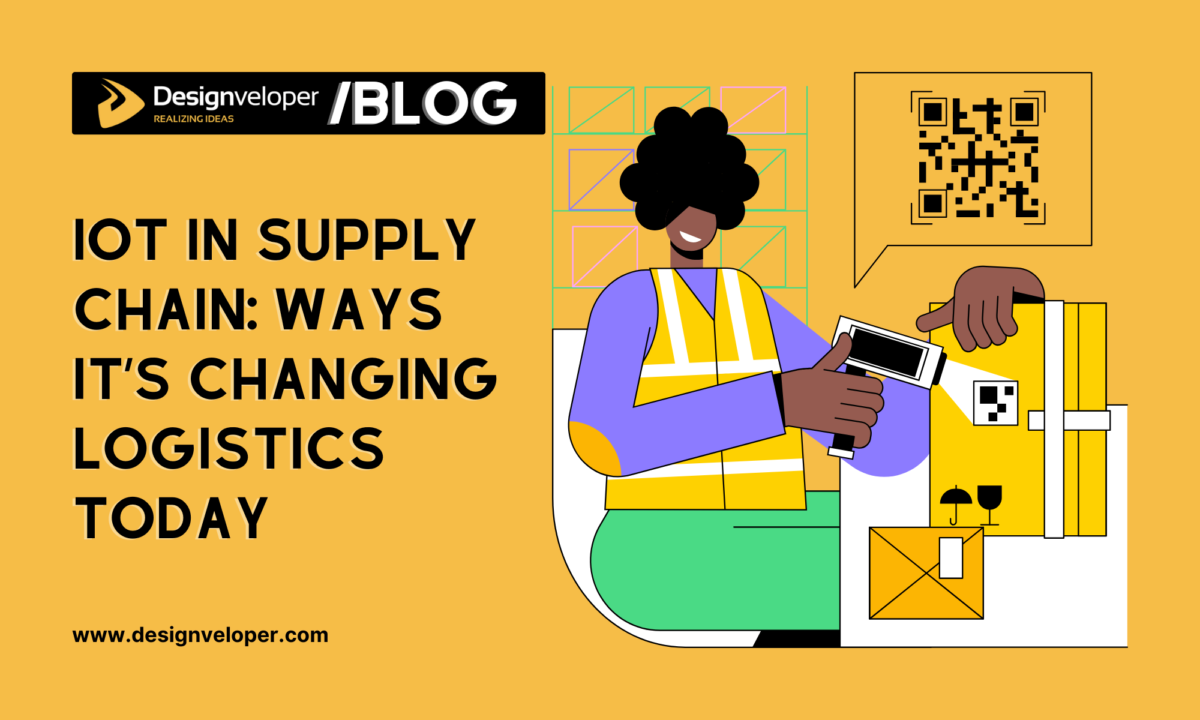IoT in Supply Chain: 7 Ways It’s Revolutionizing Logistics Today
April 18, 2025


A big transformation is taking place in global logistics. This change is due to the integration of the Internet of Things, or IoT in supply chain operations. The number of IoT devices by the end of 2024 is to amount to 18.8 billion, which is 13% more than in 2023 .
Incorporating IoT in supply chain management offers real-time tracking of goods, predictive maintenance for equipment, and enhanced inventory management. The result of these is more efficiency and less operational costs. For instance, businesses like FedEx utilize IoT sensors to monitor conditions to a package in transit and ensure on time and safe deliveries.
Moreover, the market for IoT in supply chain management is expanding rapidly. In 2024, the target markets for Energy As A Service is at $21.36 billion and to grow at a Compound Annual Growth Rate (CAGR) of 12.7% from 2024 to 2031 to attain $55.58 billion by 2031 .
Here we discuss 7 major ways in which IoT is changing the logistics of today, by discussing the impact it has on different facets of the supply chain.
Real-Time Inventory Tracking
Implementing IoT in supply chain operations has transformed inventory management. Businesses use tech such as RFID tags, smart shelves, and connected sensors to track stock levels and product movement in real time. This improves efficiency and minimizes the manual errors.
There is a substantial growth in the IoT market for warehouse management. It is to grow from $11.26 billion in 2024 to $17.93 billion in 2030, at a CAGR of 10%, owing to the increasing demand for automation and efficiency in supply chain operations.

However, now big retailers are adopting IoT solutions in order to optimize their inventory processes. For example, Walmart uses an RFID technology to know about their inventory levels at a large number of their stores, resulting in fewer stockouts and more efficient replenishment. In a similar vein, L’Oréal uses the IoT to keep track of their inventory in real time and is able to manage customer feedback based on their feedback in real time; all in the interests of improving the overall shopping experience.
The integration of IoT in supply chain operations not only improves inventory accuracy but also enables better decision-making through real-time data analytics. As a result, more and more companies are coming to realize the benefits of IoT and, consequently, the use of IoT technologies in inventory management is to soar.
FURTHER READING: |
1. 20 Best Internet of Things Examples to Consider in 2025 |
2. Top 10 IoT App Development Companies to Consider in 2025 |
3. IoT App Development Costs: What You Need to Know in 2025 |
Fleet Management & Route Optimization
Integrating IoT in supply chain operations has revolutionized fleet management and route optimization. Employing connected device data in real-time can improve the operation efficiency as a result of decreasing general costs.
The IoT fleet management market is rapidly growing globally. At approximately $17.49 billion in 2024, it is to reach $119.57 billion by 2031, growing at a compound annual growth rate (CAGR) of 29.96%.
The use of IoT technology in companies like UPS raise monitoring of their trucks to optimize routes for reduction of fuel consumption and delivery time . In the same way, Summit Materials utilizes the Samsara Connected Operations Cloud on its 4,000 vehicles fleet to centralize fuel usage, emissions, and diagnostics data and improve fuel efficiency, in addition to advancing sustainability goals .
Implementing IoT in supply chain operations enables fleet managers to access real-time insights into vehicle operations. Such planning of routes, maintenance of service levels and efficient utilization of resources becomes easy. Organizations can monitor vehicle health in real time by analyzing data from on board sensors and predict failures before they occur .
As the adoption of IoT in supply chain operations continues to grow, businesses can expect further enhancements in fleet efficiency, cost savings, and customer satisfaction.
Predictive Maintenance for Equipment
Integrating IoT in supply chain operations has significantly enhanced equipment maintenance strategies. Companies can monitor the health of machinery in real time by using IoT sensors and AI driven analytics and predict failing of machinery before they really happen.
There is a great size to the predictive maintenance market. In 2023, the valuation of the market is USD 8.53 billion , which is to reach USD 105.66 billion by 2032 growing at a CAGR of 32.32% from 2024 to 2032 . The reason behind this growth is due to the increased adoption of Industry 4.0, IoT based predictive analytics and cloud solutions in different industries.

Implementing IoT in supply chain maintenance practices offers significant cost savings. With predictive maintenance, costs of maintenance may be reduced by up to 40% and equipment downtime can be cut by 50%.
Hitachi, amongst other companies, uses AI diagnostic services to boost their maintenance operations. Through the analysis of data from the IoT sensors, they are able to make predictive analyses that more accurately predict when pieces of equipment will fail, allowing for timely intervention without operational disruption .
The integration of IoT in supply chain maintenance not only improves equipment reliability but also extends asset lifespan. As these benefits become more popular wide groups of people, predictive maintenance solutions are going to become more popular.
Cold Chain Monitoring
Integrating IoT in supply chain operations has significantly enhanced cold chain monitoring. Temperature sensitive goods’ product integrity are tracked in real time from origin to the destination.
The global cold chain logistics market was at USD 385.60 Billion in 2024 and is to reach approx. USD 1,359.78 Billion at a smidgen CAGR of 13.46% by 2024 to 2034. This is, therefore, a reflection of the ever growing demand for temperature controlled logistics.
Wireless sensors that comprise the IoT device monitor and record real time temperatures in remote locations; using IoT, one can detect any deviation that may otherwise compromise product quality. Renesas, for instance, offers use cases that leverage Narrowband IoT networks to make sure that refrigerated transport has consistent temperature monitoring.
Moreover, IoT enabled systems can also warn drivers and other players in the supply chain when a shipment ’s temperature goes beyond the set limits, enabling immediate remedial measures . This proactive approach, however, reduces spoilage and ensures that the product remains safe.
Implementing IoT in supply chain cold chain monitoring not only enhances product quality but also reduces waste and operational costs. The market is going to grow and it is vital to adopt IoT technologies in the cold chain logistics, which are efficient and reliable.
Warehouse Automation
Integrating IoT in supply chain operations has significantly advanced warehouse automation. With the use of IoT enabled devices ware houses are capable to monitor operations in real time and optimize workflow and reduce manual errors.
The market for global warehouse automation was at USD 21.81 billion in 2024 and is to reach approximately USD 95.45 billion expressing growth rate of 15.9% from 2024 to 2034. This is due to the booming demand of efficient supply chain solutions.

Robots like Proteus are purpose-built to navigate warehouse floors autonomously to move goods, and others, such as Sparrow, are robotic arms that are able to pick up a variety of items. Amazon’s Shreveport facility has achieved a 25% decrease in operational costs by way of these innovations.
Likewise, Attabotics has created a 3D robotic storage and retrieval system based on ant colonies to provide vertical storage and utilize space efficiently . This system decreases warehouse space needs by as much as 85%.
Implementing IoT in supply chain operations for warehouse automation not only enhances efficiency but also improves accuracy and scalability. Because of all this, as the IoT market develops further, it will become essential that management of modern warehouses begins to take advantage of IoT technologies.
Enhanced Visibility & Transparency
Integrating IoT in supply chain operations has significantly improved visibility and transparency across logistics networks. IoT devices like RFID tags, GPS trackers, environmental sensors can be used by companies to track location and condition of goods in realtime. It enables the processing of proactive decision making and increases all around supply chain efficiency.
There is more need for supply chain visibility solutions. The global supply chain visibility software market has been growing with a CAGR of over 13 % from 2023 to 2032 and has reached a market value of USD 2.4 billion in 2023. The need for real time data to manage disrupting swiftly is what is driving the growth of the supply chain and businesses becoming more and more complex.
Currently, companies are implementing new IoT solutions for transparency. For example, Alphabet’s spin off, Chorus provides AI based software and sensors which provide real time data on product location and condition. Cargo loss and pharmaceutical spoilage have been tackled by this technology, specifically aiding New Zealand to deliver 11 million COVID-19 vaccines .
FedEx, for instance, also uses IoT sensors to track packages, allowing customers to get precisely the shipment status on their packages delivery status, as well as to provide much more transparency in the delivery process. These implementations demonstrate the practical benefits of integrating IoT in supply chain operations.
The market for solutions related to supply chain visibility is growing, and therefore adoption of IoT technologies are becoming unavoidable at an increasing rate by businesses striving to maintain a competitive edge and satisfy customers’ need for transparency and reliability.
Data-Driven Decision Making
Integrating IoT in supply chain operations empowers organizations to make informed decisions based on real-time data. Companies can collect, and analyze information collected from connected devices in order to optimize, reduce the cost of, and improve customer satisfaction with processes.
Artificial intelligence (AI) and advanced analytics have made their way to supply chains. Until 2024, 50 percent of supply chain organizations will make investments in applications that include the support for AI and advanced analytics capabilities, says Gartner. The trend emphasizes the need for data driven strategies for realizing the optimum operational excellence.

Leading companies are leveraging IoT in supply chain operations to gain actionable insights. For example, Microsoft’s decision making processes are improved upon based on the insights of the global supply chain community. Using the data from various sources, they can anticipate any disruptions, adjust the levels of inventory and logistics to control supply costs.
Additionally, it has been noted that technology leadership should be included in the supply chain structures of the organizations. According to Gartner, this means that by 2025, more than 50 per cent of supply chain organizations will have a technology leadership role reporting into the chief supply chain officer. By effectuating the shift in the organization, it becomes easier to implement advanced technologies within it and promote a culture of continuous improvement.
By embracing IoT in supply chain operations, businesses can harness the power of data to drive strategic decisions, enhance efficiency, and maintain a competitive edge in an increasingly complex market.
Conclusion
The integration of IoT in supply chain operations is reshaping logistics by enhancing visibility, efficiency, and responsiveness. Tracking in real time, predictive maintenance, and data driven decisions are becoming normalized and have made it to the standard level of doing businesses, allowing companies to optimize their operations and reduce the costs.
As the adoption of IoT in supply chain operations continues to expand, businesses that embrace these technologies will be better positioned to navigate the complexities of modern logistics, meet customer expectations, and maintain a competitive edge in the marketplace.






Read more topics




























































